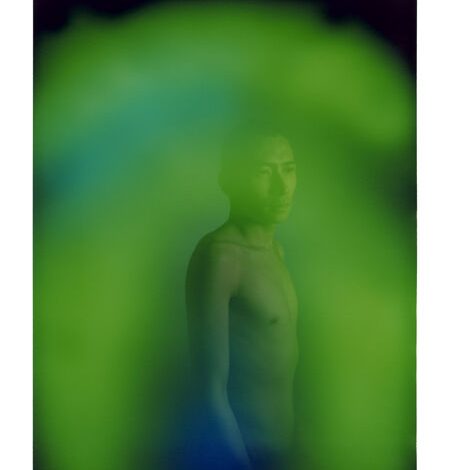Aura History.

Auras have been a part of spiritual beliefs for centuries, representing the energy field around living beings. Different cultures interpret auras uniquely.
Auras, often described as an energy field surrounding living beings, have intrigued humans for centuries. Various cultures, including ancient Egyptians, Greeks, and Hindus, have referenced auras in their spiritual and healing practices. These energy fields are believed to reflect a person’s physical, emotional, and spiritual state.
Modern interpretations of auras often involve color analysis, where each color represents different aspects of an individual’s well-being. People seek aura readings to gain insights into their health, emotions, and personal growth. As interest in holistic and alternative medicine grows, the fascination with auras continues to expand, bridging ancient wisdom with contemporary practices.

Credit: www.wikidata.org
Origins Of Aura
The concept of an aura has fascinated humans for centuries. Many cultures believe in the presence of a subtle energy field around living beings. This energy, often called an aura, reflects the spiritual, emotional, and physical state of a person.
Ancient Beliefs
Ancient civilizations held strong beliefs about auras. Egyptians depicted auras in their art. They showed figures with glowing halos. Greeks also believed in auras. They thought gods and spiritual beings had them. In India, auras are a part of spiritual traditions. The Vedas mention the human energy field.
Many ancient texts describe auras. They explain how to see and interpret them. These descriptions have guided spiritual practices for ages.
Cultural Significance
Auras hold deep cultural significance across the world. In China, auras are linked to health. Traditional Chinese Medicine considers the balance of energy fields. In Japan, the concept of “ki” is similar. It refers to the life force that surrounds living beings.
Native American cultures also recognize auras. They use them in healing rituals. Shamans interpret auras to diagnose and treat illnesses.
| Culture | Belief |
|---|---|
| Egyptians | Depicted auras in art |
| Greeks | Believed gods had auras |
| Indians | Mentioned auras in Vedas |
| Chinese | Linked auras to health |
| Japanese | Referred to auras as “ki” |
| Native Americans | Used auras in healing rituals |
Understanding the origins of auras helps us connect with ancient wisdom. It shows the universal nature of this fascinating concept.

Credit: hiddenmantra.com
Medieval Perspectives
The medieval era had unique views on auras. These perspectives were deeply influenced by religion and philosophy. Let’s explore how medieval thinkers understood auras.
Religious Interpretations
Medieval people believed auras had divine origins. Religious figures often described auras as spiritual halos. These halos were seen around saints and holy individuals.
Church art from the period shows these glowing circles. These artistic depictions reinforced the belief in spiritual auras. They were a sign of closeness to God.
Monks and priests wrote about auras in religious texts. They saw them as a reflection of one’s spiritual purity. An aura’s brightness showed a person’s holiness.
Philosophical Views
Medieval philosophers had different ideas about auras. They linked auras to the nature of the soul. Some thought auras were an extension of the human spirit.
Philosophers like Thomas Aquinas wrote about auras. He believed they showed the moral state of a person. Good deeds made auras brighter, while sins dimmed them.
Other thinkers connected auras to the elements and humors. They believed an aura could reveal a person’s health. A balanced aura indicated good physical and mental well-being.
| Aspect | Religious Interpretation | Philosophical View |
|---|---|---|
| Source | Divine origin | Human spirit |
| Appearance | Halos around saints | Reflection of moral state |
| Significance | Spiritual purity | Health and well-being |
Medieval views on auras were rich and varied. Both religion and philosophy provided insights. These perspectives still influence modern thoughts on auras.
Modern Discoveries
The study of auras has evolved significantly in recent years. Modern technologies and scientific research have shed new light on this ancient concept. This section explores the modern discoveries in aura history.
Scientific Studies
Recent scientific studies have begun to explore auras in detail. Researchers use advanced tools to measure and analyze auras. These studies aim to understand the link between auras and human health.
- Researchers use biofeedback machines to measure energy fields.
- Studies show auras may change with emotional states.
- Data suggests auras can reflect physical well-being.
Technological Advances
Technology has greatly enhanced our understanding of auras. Advanced devices can now capture and display auras in real-time. These tools allow for more precise studies and better visual representations.
| Technology | Function |
|---|---|
| Aura Cameras | Capture and visualize energy fields |
| Biofeedback Devices | Measure physiological responses |
| Energy Scanners | Analyze body’s energy patterns |
These technological advances have made aura studies more accessible. They provide valuable insights into human energy fields.
Future Of Aura Research
The future of aura research holds many exciting possibilities. Scientists and researchers are exploring new ways to understand and utilize auras. This could change our understanding of human energy fields.
Potential Applications
The potential applications of aura research are vast. In the healthcare sector, auras could help detect illnesses early. Doctors might use aura scans to find issues before they become serious.
In education, teachers could use auras to understand students’ emotional states. This can help them provide better support and create a positive learning environment.
Businesses could also benefit from aura research. Employers might use aura readings to improve workplace harmony and productivity.
Ethical Considerations
Ethical considerations are crucial in aura research. Privacy is a significant concern. People may not want their auras scanned without consent.
Accuracy is another key issue. Incorrect readings could lead to wrong conclusions. It is important to ensure that aura research is reliable and valid.
Lastly, the potential for misuse exists. Aura information should be used responsibly and ethically.

Credit: www.aura.com
Frequently Asked Questions
What Is The Origin Of Aura?
The concept of Aura originates from ancient spiritual traditions and practices, particularly in Hinduism and Buddhism.
How Has The Perception Of Aura Evolved?
Throughout history, the perception of Aura has shifted from purely spiritual to scientific and psychological perspectives.
Why Is Aura Important In Spiritual Practices?
Aura is considered a reflection of one’s energy and state of being, playing a crucial role in various spiritual practices.
How Can You See An Aura?
Seeing an Aura involves focusing on a person’s outline in dim light, training your eyes to detect subtle energy fields.
Conclusion
Understanding the history of auras reveals their profound impact on human cultures. Their significance spans centuries, reflecting spiritual and emotional states. Exploring auras deepens our connection to ancient wisdom and modern spirituality. Embrace this knowledge to enrich your personal journey.
Let the history of auras guide your path to self-discovery and enlightenment.



